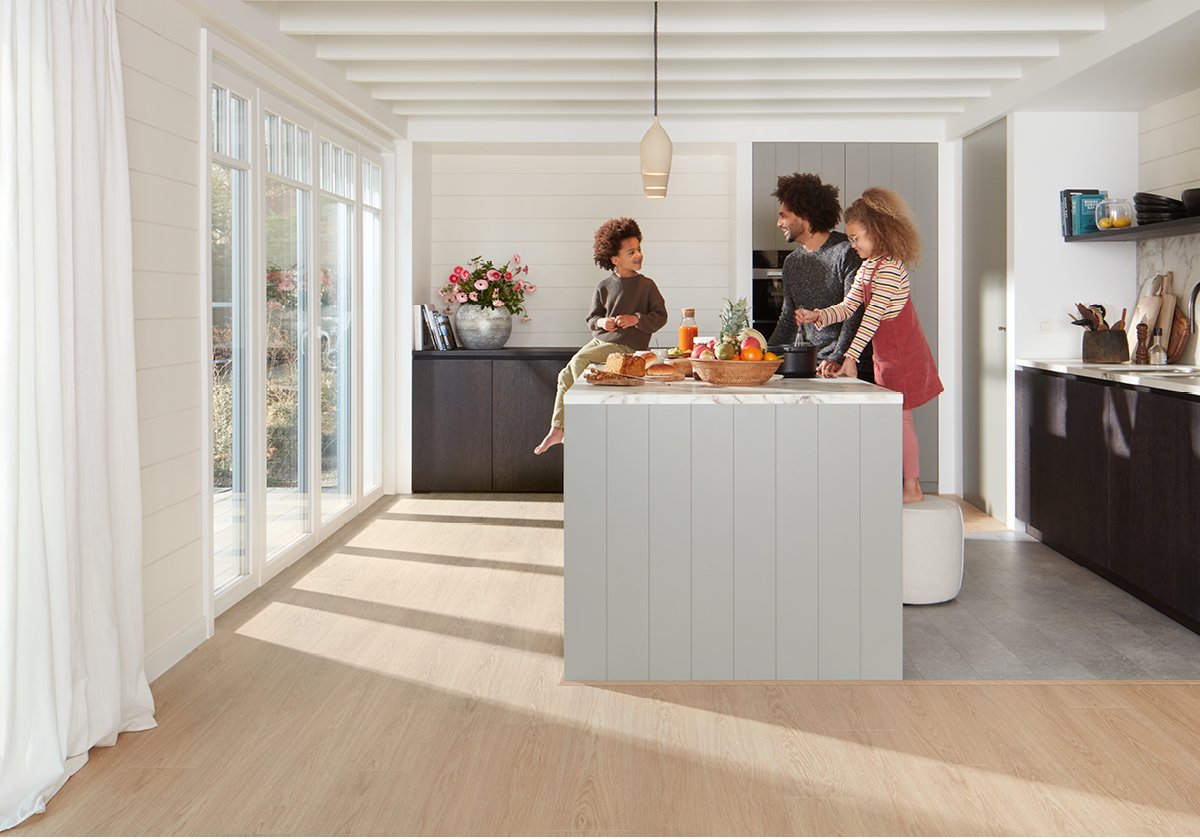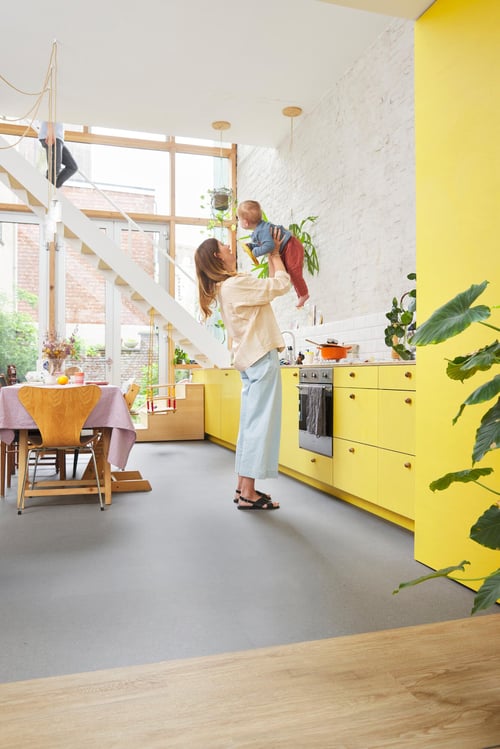Finding the right floors for different rooms is like putting the pieces of a puzzle together. Comfort and maintenance matters in each room and, of course, it needs to look nice as well. You may want a different floor in the (open) kitchen and living room, because you have different priorities for each space. Curious how to tackle the floor transition from kitchen to living room? Here’s how
Why choose a different floor in the kitchen and living room?
There could be many reasons for choosing a different floor in the kitchen and living room. Perhaps you value ease of maintenance and water-resistance most in the kitchen. After all, you are more likely to spill things here than in other rooms. In that case, you're probably considering vinyl or ceramic tiles.
In the living room, you prefer a warmer option, such as parquet or laminate flooring that resembles wood. This is where you want to be able to walk around barefoot, enjoy the acoustics, and host your guests in style. No problem: because with the right tips and tricks, it’s easy to combine two types of flooring in a single space.

Combine flooring options in a beautiful way
If you want to achieve a smooth transition from one floor to another, it's best to take the hues and textures into account as well. Don’t rush this process. After all, you’ll be walking on these floors for years to come.
If you'd rather prefer as much uniformity as possible in your home, opt for a combination of vinyl planks, vinyl tiles, and laminate flooring with a similar design: both with a wood look and in similar hues, etc. One option is to combine a laminate from BerryAlloc in your living room with a water-resistant laminate in the same colour in your kitchen.
Or make your kitchen stand out instead. Choose a flooring type that matches the colour of your kitchen cabinets or counter. And in this case, you opt for a different living room floor that matches the colour and texture of your furniture. By doing so, you highlight the fact that the functionality of the area changes where the look changes. Contrasts can be really nice too!
And why not let your creativity run free? By combining different colours and patterns you could add a playful and fun dynamic to your interior.
Use a transition profile
If you put two types of flooring next to one another, you don’t want to trip over the ‘border’ between the floors, both literally and figuratively.
The transition between two floors depends on the choice of flooring. They often differ in thickness, which could cause a minor height difference between the two floors. In case of a floating floor, a reducer profile offers a useful and neat solution. If you do not have any height difference between two floating floors, you can install a T-profile instead.
Additionally, parquet flooring that has been glued down does not require profiles – a silicone grout will do the trick.
When choosing your reducer profile, you could opt for one in the same look as your flooring. This way, it looks like the natural extension of your floor. Or you could pick a reducer profile in silver or aluminium to bring decorative function as well.
-
 T-Profile Bloom sand natural
T-Profile Bloom sand natural -
.jpg?width=6327&height=4271&name=T-Profile%20Alu%20high%20(B0017%20Silver).jpg) T-profile Silver
T-profile Silver
Alternatively, especially in the absence of a height difference between the floors and if the expansion joint is limited to a couple of millimetres (<5mm), you could finish with fillertwine and a flexible sealing strip instead. This way, you do not create any height difference with a transition strip, you seal the opening between the floors neatly, and allow for the (floating) floors to move.
vinyl tiles - Live - nostalgic oak honey + vibrant stone gunmetal
Installing your floor yourself? We will guide you through the process step by step and show you how to achieve a professional finish. Watch our installation videos and get started yourself!



.jpg?width=300&name=Overview%20image%20blog%20home_Myfloorstyle_gyant%20xl%20warm%20natural(398x344).jpg)
.jpg?width=300&name=Overview%20image%20blog%20home_Myfloorstyle_sunset%20boulevard(398x344).jpg)
.jpg?width=300&name=Overview%20image%20blog%20home_Myfloorstyle_excellence%20plus%20acc(398x344).jpg)